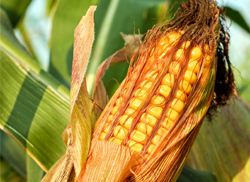
Wheat is the second most popular cereal after maize in Kenya. It is an ingredient in many favourite and common meals such as chapati, cake, mandazi, samosas, bread among others.
Interestingly, most of the wheat-based foods in the country are considered as precious and for special occasions especially in rural and low-income areas. Wheat farming is mainly done on large scale for commercial purposes. Annually, wheat is grown in about 150,000 hectares in the country. Narok is the country’s main wheat growing area.
Other wheat growing areas include Njoro, Narumoro, Timboroa, Nakuru, Nyandarua and UasinGishu. To minimize chemicals use promote organic farming, Kenya Agricultural and Livestock Research Organization (KALRO) has been screening and breeding for resistant varieties.
Among key wheat varieties developed by KALRO) are Robin, Eagle 10 Kenya Wren, Kenya Tai, Kenya Sunbird, Kenya Korongo, Kenya Kingbird and Kenya Hawk. Due to poor rainfall, wheat production in 2014 went low by 1.39 million bags from 4.99 million to 3.6 90-kiologram bags. Wheat production in 2013 was 4.99 million bags. However, in 2014, was low by 3.6 million bags. The poor production in 2014 was largely attributed to poor rainfall distribution that affected the Narok County, which on average accounts Rice is the third staple food in Kenya after maize and wheat. Rice farming is estimated at between 33,000 and 50,000 metric tonnes. Consumption is estimated at 180,000 and 250,000 tonnes.
About 95 per cent of rice in Kenya is grown under irrigation in paddy schemes managed by the National Irrigation Board (NIB). The remaining five per cent is rain-fed.
The average unit production under irrigation is 5.5 tonnes a hectare for the aromatic variety, and seven tonnes for non-aromatic varieties. Unit yield for rain-fed rice production is slightly below two tonnes a hectare.
Galana-Kalau Food Security Project
In 2014, the government, through NIB, embarked on the actualization of Galana-Kalau Food Security Project, a one-million acre irrigation project. The project is being implemented in Tana River and Kilifi Counties. The government is making good progress in implementation of the 10,000 acres phase of the project. Water off take is already complete while maize has already been planted in over 2,000 acres (by June 2015). Shortly, the government will commence the roll-out program covering at least 100,000 acres in Galana – Kulalu and other designated suitable schemes throughout the country under a viable business framework. In the 2015-2016 budget, the government allocated Sh3.5 billion to the Galana Irrigation project.
